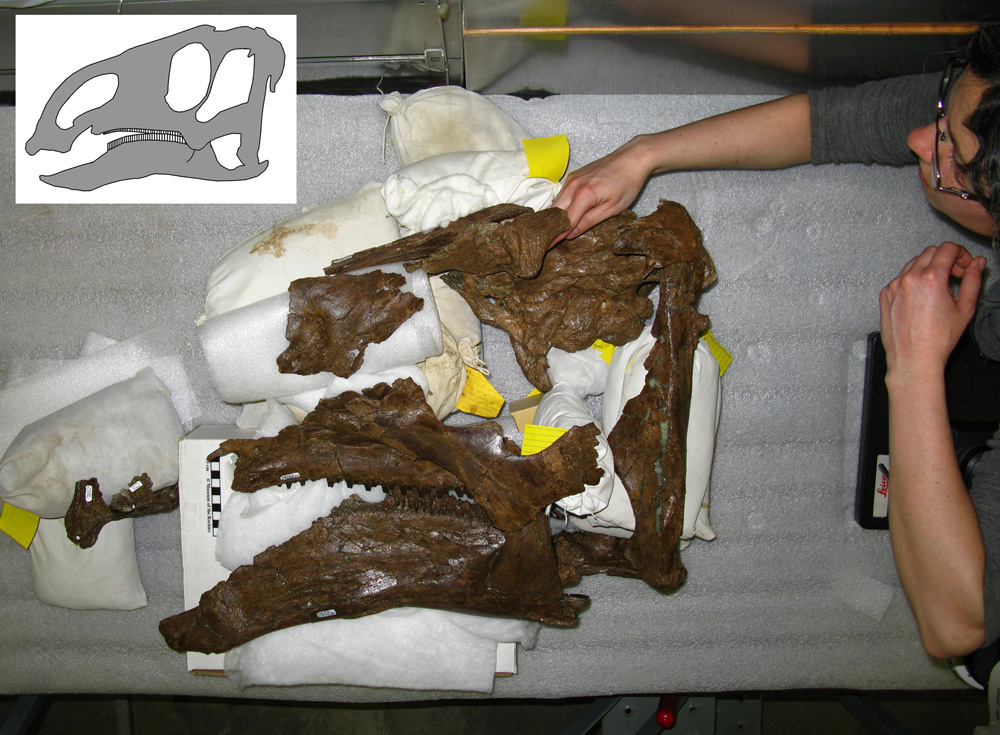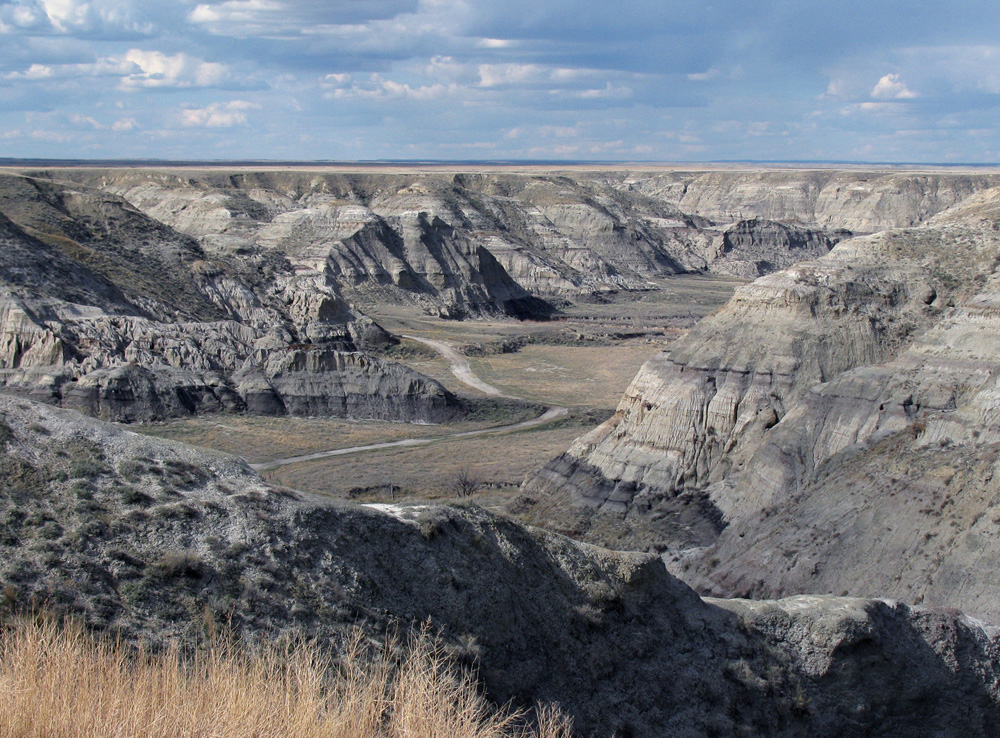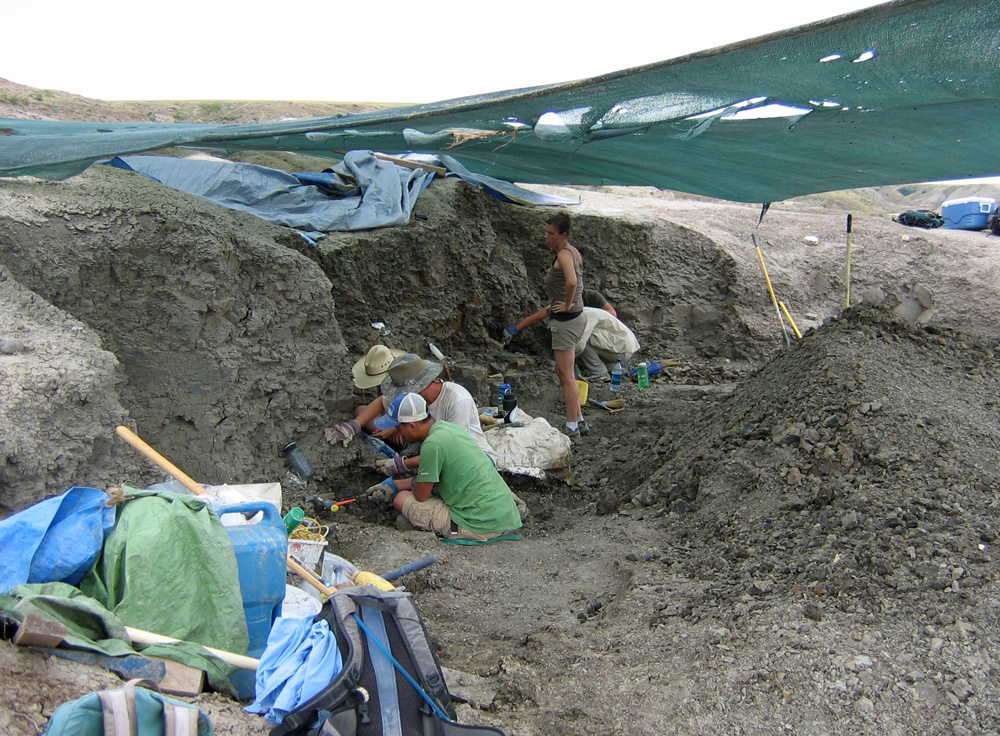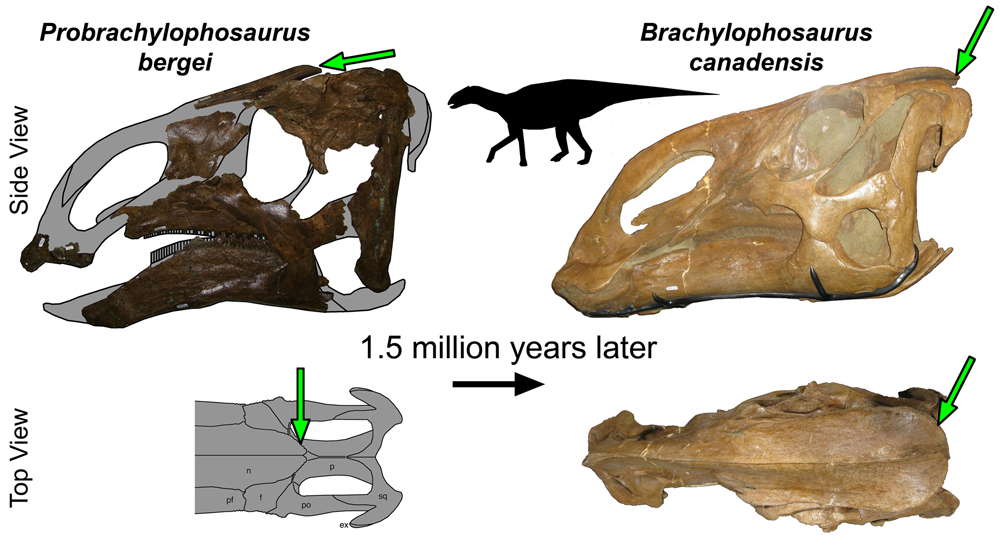Photos: Digging Up "Superduck," a New Hadrosaur
A lizardlike crest on the skull of a sizable duck-billed hadrosaur found in Montana and nicknamed "superduck" is helping scientists close a gap in the hadrosaur family tree, linking crested species to earlier species without crests. [Read the full story on the new hadrosaur species]
Piecing it together
Elizabeth Freedman Fowler, the paleontologist who led the team that discovered and described the new hadrosaur species Probrachylophosaurus, assembles the bones of its skull. (Credit: Denver Fowler.)
Dig site
Landscape view of area near the town of Rudyard, Montana, where Probrachylophosaurus was discovered. As illegal fossil collection in this area is common, the team prioritized removal of the hadrosaur's skull to protect it from poachers. (Credit: Denver Fowler.)
Excavating "superduck"
The Museum of the Rockies field crew digs in the "superduck" quarry. (Credit: Elizabeth Freedman Fowler.)
Get the world’s most fascinating discoveries delivered straight to your inbox.
First fossils
Probrachylophosaurus bones in the ground. The first Probrachylophosaurus fossils were discovered decades prior to the skull that identified Probrachylophosaurus as a new species. The leg bone helped paleontologists determine the dinosaur's age. (Credit: Elizabeth Freedman Fowler.)
A crest evolves
Visual abstract depicting evolution of Probrachylophosaurus into Brachylophosaurus, which lived 1.5 million years later and had a larger skull crest. (Credit: Elizabeth Freedman Fowler.)
The face of "superduck"
Elizabeth Freedman Fowler, an adjunct professor at Montana State University, holds artwork by John Conway depicting the new species of duck-billed dinosaur that she helped uncover and describe. (Credit: MSU/ Sepp Jannotta.)
Follow Mindy Weisberger on Twitter and Google+. Follow us @livescience, Facebook & Google+. Original article on LiveScience.

Mindy Weisberger is a science journalist and author of "Rise of the Zombie Bugs: The Surprising Science of Parasitic Mind-Control" (Hopkins Press). She formerly edited for Scholastic and was a channel editor and senior writer for Live Science. She has reported on general science, covering climate change, paleontology, biology and space. Mindy studied film at Columbia University; prior to LS, she produced, wrote and directed media for the American Museum of Natural History in NYC. Her videos about dinosaurs, astrophysics, biodiversity and evolution appear in museums and science centers worldwide, earning awards such as the CINE Golden Eagle and the Communicator Award of Excellence. Her writing has also appeared in Scientific American, The Washington Post, How It Works Magazine and CNN.








